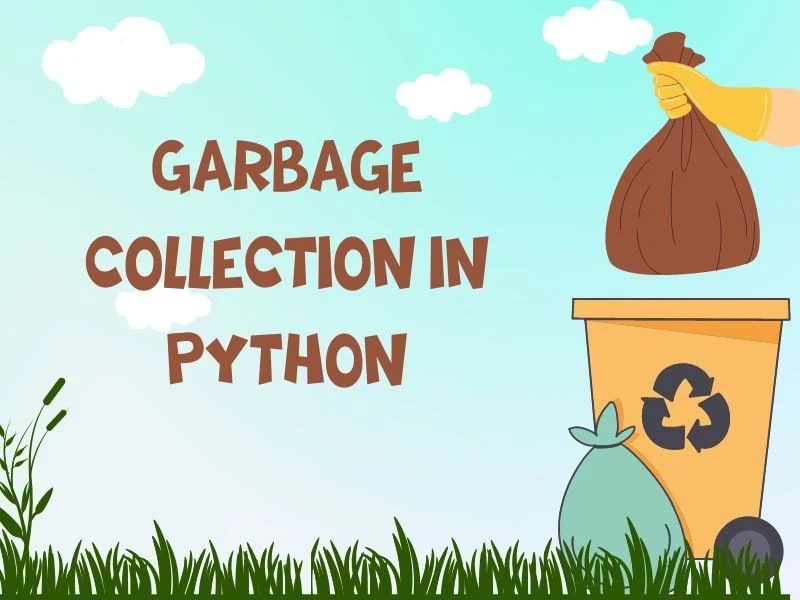Are you wondering what garbage collection is in Python? Garbage collection is a feature of Python that allows it to reclaim memory that is no longer used by the program. This helps to reduce the amount of memory used by programs and improves their performance.
It works by keeping track of all objects that are created in a program and when an object is no longer needed, it will be marked for deletion and removed from memory. This process happens automatically so you don’t have to do anything manually.
Overall, garbage collection in Python can be beneficial if used correctly and responsibly. If you are looking for ways to optimize your code and make sure it runs smoothly, then consider turning on garbage collection in your project. It’s easy to turn on or off as needed and can provide great results with minimal effort.
What is Garbage Collection in Python?
Garbage Collection in Python is a mechanism for automatically eliminating objects from memory when they are no longer referenced. It performs periodic cleanup operations to ensure unused objects are collected and memory is deallocated at regular intervals. Garbage Collection provides an automated system for allocating and releasing memory, making it easier for programmers to create more efficient programs.
The main concept behind Garbage Collection is that of object reference counting. Each object created in a program will have a counter associated with it which keeps track of how many references to that object currently exist. If the counter reaches 0, then the object has no reference stored in memory and can be safely removed by the Garbage Collector. This helps with managing the long-term memory usage of the program and ensures that no unreferenced objects linger in memory indefinitely. Read Course Reviews
In addition to this basic function, Garbage Collection can also perform periodic “cleanup” operations such as deallocating inactive resources or performing garbage compaction operations to make space available in the heap. It is important to remember that Garbage Collection activities take time and may impact program performance if not managed correctly. An experienced programmers will always consider how their code interacts with Garbage Collection so their programs don’t suffer unnecessary delays due to its activity.
Garbage Collection is a powerful tool for optimizing Python programs and improving their overall performance on the current platform without having to rely on external libraries or other complex solutions. However, it is still important for programmers to understand how it works so they can ensure their programs are using it efficiently and taking advantage of all its features during execution.
The Benefits of Garbage Collection
Garbage collection is a great tool for memory management in Python. It helps to keep your system running efficiently and can help you avoid some common memory-related errors. In this blog post, we’ll explore the benefits of using garbage collection in Python and analyze the advantages, disadvantages, and algorithms used when working with it.
So, what is garbage collection? Garbage Collection is a method that reclaims memory from objects that are no longer in use but were still allocated by your program. This can help your program to work more efficiently because it allows you to free up space for new objects without having to manually deallocate the old ones. It also helps with avoiding memory leaks which can cause programs to crash if not managed correctly.
When it comes to potential memory savings, garbage collection is invaluable. When you don’t use garbage collection, your program has to manage memory manually and thus wastes precious time with extra tasks such as freeing up space when an object is no longer being used. By using garbage collection in Python, you can save valuable system resources which will further improve the performance of your programs or applications. Check out Professional Courses.
Garbage Collection algorithms used in Python also provide increased performance benefits over manual memory management techniques. Algorithms like Generational Garbage Collection (GGC) and Reference Counting (RC) try to optimize the way memory is handled by predicting the lifespan of an object and only freeing those which have expired their cycle. GGC works by dividing objects into separate groups according to their age while RC looks at how many references a particular object has and frees those with references below a certain threshold.
How Does Garbage Collection Work in Python?
Garbage collection is an important element of memory management, and it’s no different in Python. Garbage collection in Python works by managing object references to prevent memory leaks, allowing for efficient use and reuse of system resources. To understand how garbage collection works, we’ll take a deeper dive into the object review approach, cyclic references, garbage collector algorithm and automated memory reclaiming.
When it comes to managing object references, there are two ways to approach garbage collection in Python: Reference Counter and Generational Garbage Collection. The reference counter approach keeps track of all references made to objects; when all references are gone, the associated object can be reclaimed. This is especially useful when dealing with cyclic references – objects that refer back to themselves – where a single reference counter can handle multiple connected objects.
Generational garbage collection is another popular method for automatic memory reclaiming in Python. It divides objects into distinct generations based on their age and frequency of access by the program. This allows for more efficient resource usage because newly created objects are marked for quick removal.
Analytics Jobs
Python also implements weak reference support which allows an object's memory to be freed even if it still holds a reference from other parts of the program; this ensures memory leaks aren't caused by longlived unused objects. Weak references are especially useful when dealing with large datasets or graphs if they’re changed often without consistently being referenced by the program.


